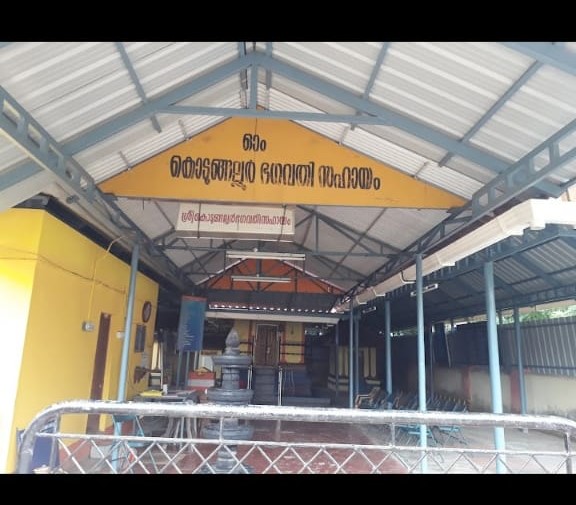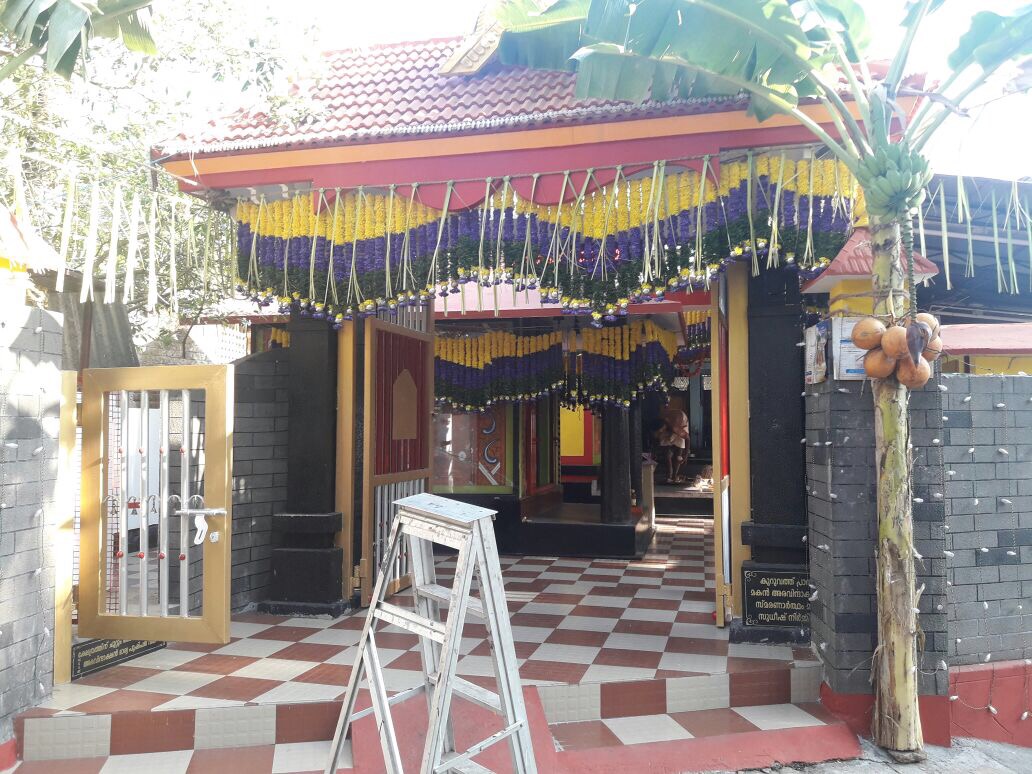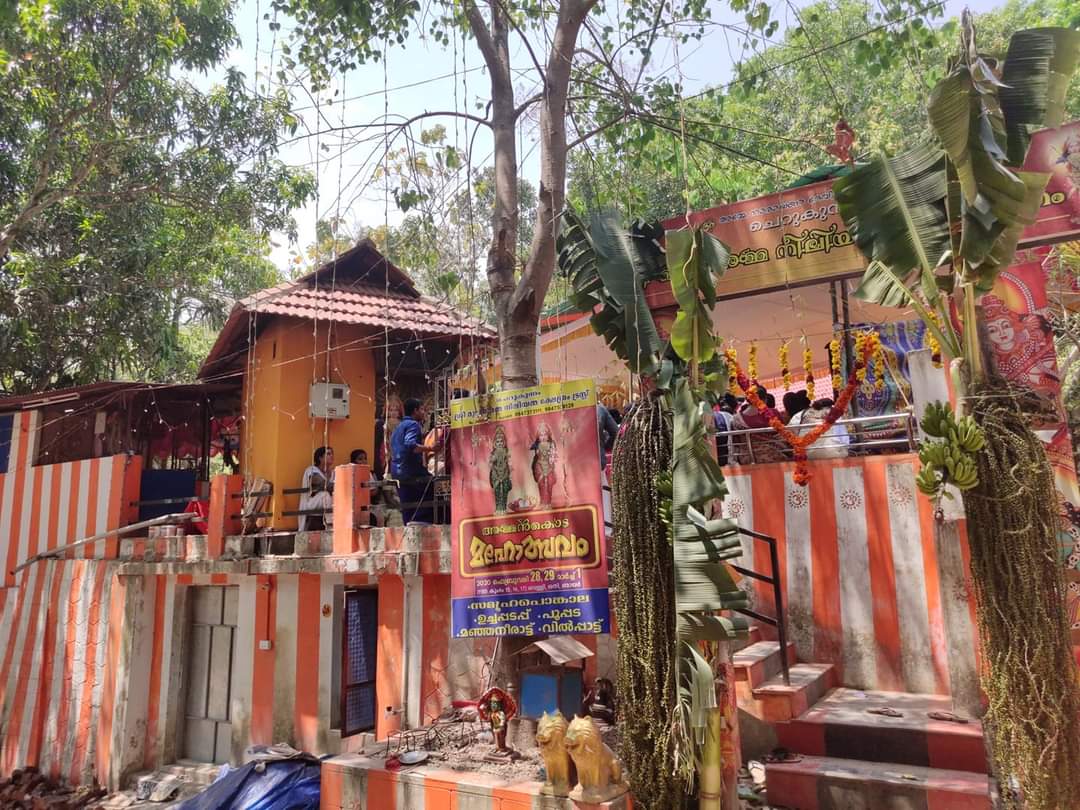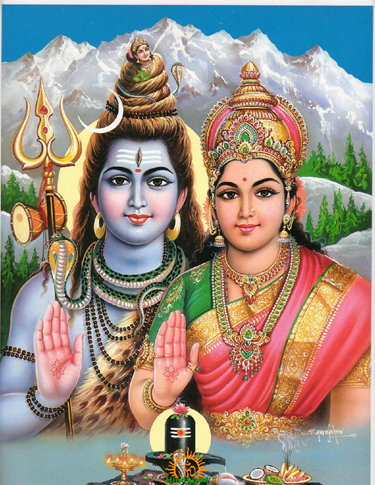
Parvati, Uma or Gauri is the Hindu goddess of fertility, love, beauty, harmony, marriage, children, and devotion; as well as of divine strength and power. Known by many other names she is the gentle and nurturing form of the Supreme Hindu goddess Adi Parashakti and one of the central deities of the Goddess-oriented Shakti sect called Shaktism. She is the Mother goddess in Hinduism, and has many attributes and aspects. Along with Lakshmi and Saraswati, she forms the trinity of Hindu goddesses (Tridevi).
Parvati is the wife of the Hindu god Shiva, who according to Shaivism is the protector, the destroyer, and regenerator of the universe and all life. She is the reincarnation of Sati, Shiva's first wife who died during a yajna. Parvati is the daughter of the mountain king Himavan and queen Mena. Parvati is the mother of Hindu deities Ganesha and Kartikeya. The Puranas also referenced her to be the sister of the river goddess Ganga and the preserver god Vishnu. She is the divine energy between a man and a woman, like the energy of Shiva and Shakti. She is also one of the five equivalent deities worshipped in Panchayatana puja of the Smarta Tradition of Hinduism.
Parvati is a form of Shakti. In Shaivism, she is the recreative energy and power of Shiva, and she is the cause of a bond that connects all beings and a means of their spiritual release. In Hindu temples dedicated to her and Shiva, she is symbolically represented as the argha. She is found extensively in ancient Indian literature, and her statues and iconography grace Hindu temples all over South Asia and Southeast Asia.
Parvati is known by many names in Hindu literature. Other names which associate her with mountains are Shailaja (Daughter of the Mountains), Haimavathi (Daughter of Himavan), Devi Maheshwari, and Girija or Girirajaputri (Daughter of king of the mountains). She is also called Narayani because she is the sister of Narayana.
The Lalita sahasranama contains a listing of 1,000 names of Parvati (as Lalita). Two of Parvati's most famous epithets are Uma and Aparna. The name Uma is used for Sati (Shiva's first wife, who is reborn as Parvati) in earlier texts, but in the Ramayana, it is used as a synonym for Parvati. Parvati is also the goddess of love and devotion, or Kamakshi; the goddess of fertility, abundance and food/nourishment, or Annapurna. She is also the ferocious Mahakali that wields a sword, wears a garland of severed heads, and protects her devotees and destroys all evil that plagues the world and its beings.
Sati-Parvati appears in the epic period (400 BC–400 AD), as both the Ramayana and the Mahabharata present Parvati as Shiva's wife. However, it is not until the plays of Kalidasa (5th–6th centuries) and the Puranas (4th through the 13th centuries) that the stories of Sati-Parvati and Shiva acquire more comprehensive details. Kinsley adds that Parvati may have emerged from legends of non-aryan goddesses that lived in mountains. While the word Uma appears in earlier Upanisads, Hopkins notes that the earliest known explicit use of the name Pārvatī occurs in late Hamsa Upanishad.
Parvati, the gentle aspect of Devi Shakti, is usually represented as fair, beautiful, and benevolent. She typically wears a red dress (often a sari), and may have a head-band. When depicted alongside Shiva she generally appears with two arms, but when alone she may be depicted having four. These hands may hold a trident, mirror, rosary, bell, dish, goad, sugarcane stalk, or flowers (such as a lotus). One of her arms in front may be in the Abhaya mudra (hand gesture for 'fear not'), one of her children, typically Ganesha, is on her knee, while her younger son Skanda may be playing near her in her watch. In ancient temples, Parvati's sculpture is often depicted near a calf or cow – a source of food. Bronze has been the chief metal for her sculpture, while stone is the next most common material.
Parvati and Shiva are often symbolized by a yoni and a linga respectively. In ancient literature, yoni means womb and place of gestation, the yoni-linga metaphor represents origin, source or regenerative power. The linga-yoni icon is widespread, found in Shaivite Hindu temples of South Asia and Southeast Asia. Often called Shivalinga, it almost always has both linga and the yoni. The icon represents the interdependence and union of feminine and masculine energies in recreation and regeneration of all life. In some depictions, Parvati and Shiva are shown in various forms of sexual union.
If Parvati is depicted with two hands, Kataka mudra - also called Katyavalambita or Katisamsthita hasta - is common, as well as Abhaya (fearlessness, fear not) and Varada (beneficence) are representational in Parvati's iconography. Parvati's right hand in Abhaya mudra symbolizes "do not fear anyone or anything", while her Varada mudra symbolizes "wish-fulfilling". In Indian dance, Parvatimudra is dedicated to her, symbolizing divine mother. It is a joint hand gesture, and is one of sixteen Deva Hastas, denoting the most important deities described in Abhinaya Darpana. The hands mimic motherly gesture, and when included in a dance, the dancer symbolically expresses Parvati.Alternatively, if both hands of the dancer are in Ardhachandra mudra, it symbolizes an alternate aspect of Parvati.
Parvati is expressed in many roles, moods, epithets, and aspects. In Hindu mythology, she is an active agent of the universe, the power of Shiva. She is expressed in nurturing and benevolent aspects, as well as destructive and ferocious aspects. She is the voice of encouragement, reason, freedom, and strength, as well as of resistance, power, action and retributive justice. This paradox symbolizes her willingness to realign to Pratima (reality) and adapts to the needs of circumstances in her role as the universal mother. She identifies and destroys evil to protect (Mahakali), as well as creates food and abundance to nourish (Annapurna).

Add
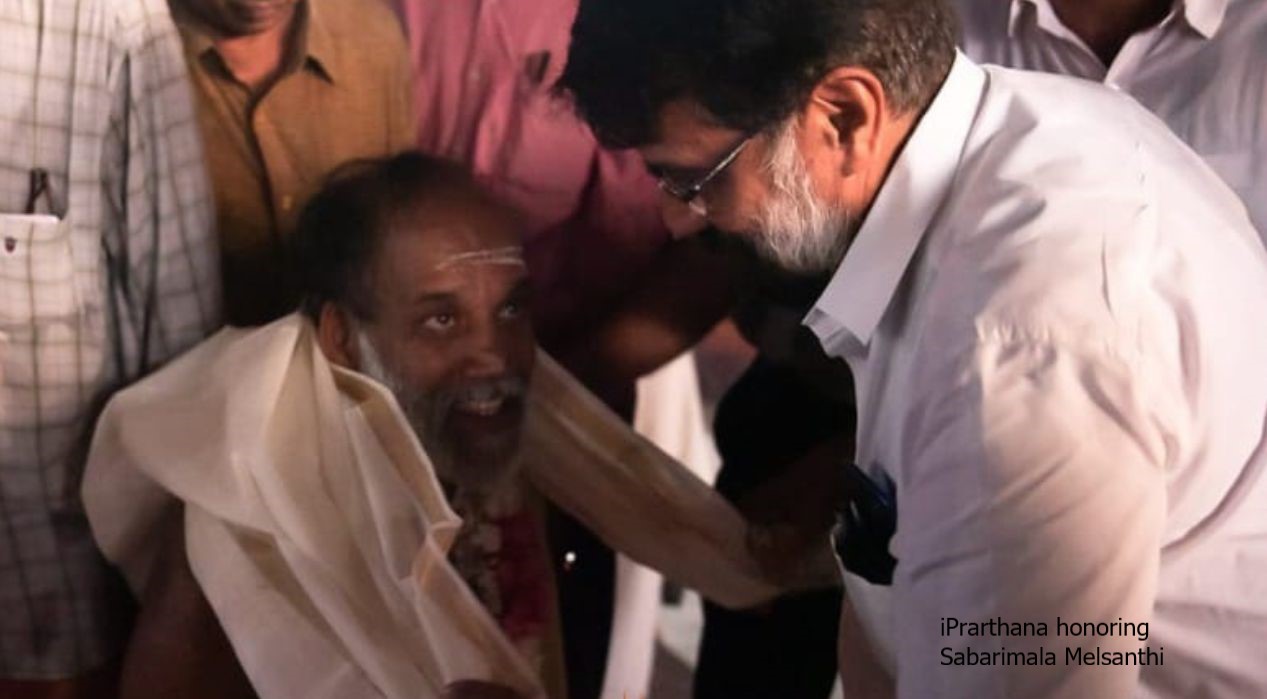
5
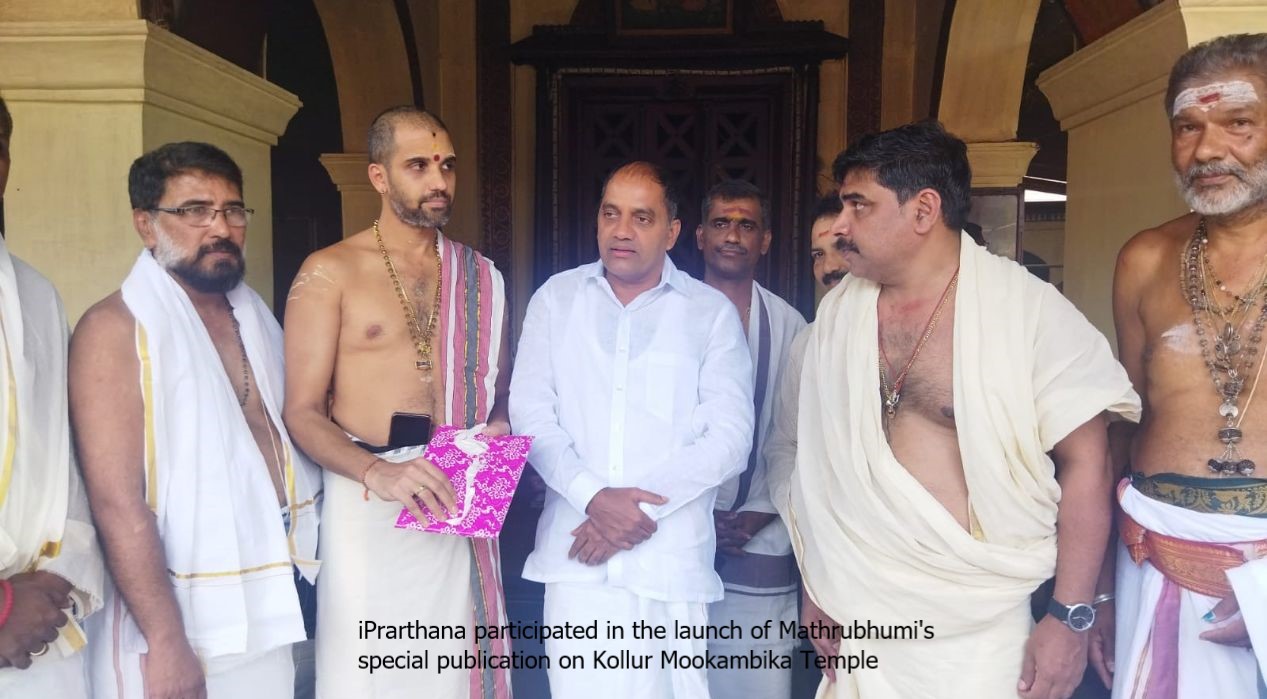
4

1

3

1
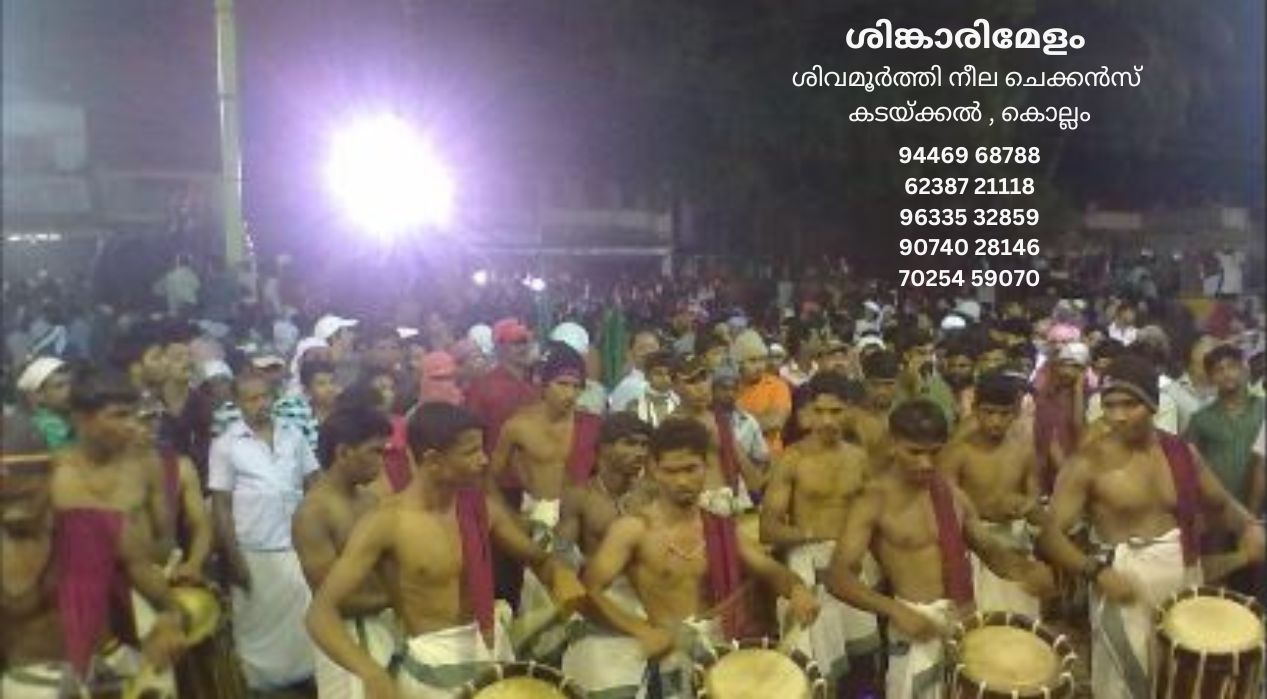
27Nov2022
